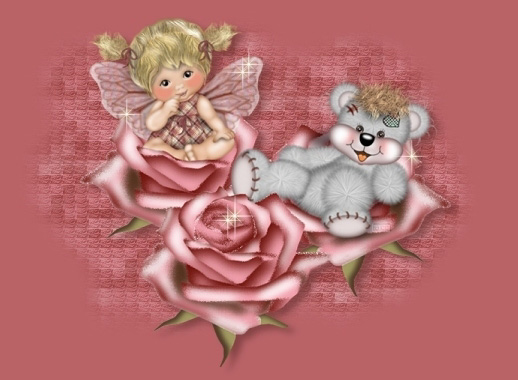|  Children with Bipolar Disorder 
Bipolar disorder (BD) in children and adolescents is severe and has significant adverse effects on academic, social and family functioning. The high rate of relapse and suicide attempts in youth with BD makes effective treatment essential. Unfortunately, there are little controlled data available to guide treatment decisions. Most available information is based upon case reports, retrospective studies or open studies. Although mood stabilizers are the mainstay of treatment, there is increasing interest in the newer antipsychotics and anticonvulsant medications for the treatment of this disorder. Before prescribing these medications for children with BD, however, it is important for clinicians to be aware of the existing literature related to the use of these drugs in children and adolescents. 
There is only one published double-blind, placebo-controlled study of a mood stabilizer for the treatment of adolescent BD. In this study, 25 adolescent outpatients with diagnoses of BD and substance abuse were randomized to lithium or placebo in a six-week trial. There was significantly greater improvement with lithium than placebo in the treatment of both the BD and the substance dependence. The mean lithium level for responders was 0.9 mEq/L (Geller et al., 1998). In a multisite study of divalproex (Depakote) treatment in children and adolescents with BD, 48 patients received divalproex until stabilized. Patients then were randomized to either divalproex or placebo. The data are currently being analyzed and should be available shortly (personal communication). 
In an open clinical study of valproate treatment for adolescent mania, 15 outpatients received valproate 750 mg/day to 2000 mg/day for seven weeks. Eighty-seven percent of patients showed some symptom improvement (Papatheodorou et al., 1995). Carbamazepine (Tegretol) up to 300 mg/day has been reported to acutely improve the symptoms of three adolescents with BD. These adolescents received maintenance treatment from two to four years and remained euthymic except for brief episodes of hypomania (Woolston, 1999). 
In another recent study, mood stabilizers for treatment in children and adolescents with BD were compared in a six-week open trial. Forty-two outpatient children and adolescents with BD were randomly assigned to lithium (mean serum level 0.9 mEq/L), divalproex (mean serum level 82.8 mcg/L), or carbamazepine (mean serum level 7.1 mcg/L). Response rates defined by 50% reduction in the Young Mania Rating Scale were as follows: divalproex 53%, lithium 38% and carbamazepine 38%. No serious adverse events were found on any mood stabilizer (Kowatch et al., in press). What about the newer anticonvulsants? There is very little information available regarding their use in BD. Ryback et al. (1997) completed a retrospective study of 18 adolescents. Fifteen of the adolescents were diagnosed with BD not otherwise specified, one with bipolar II and two with schizoaffective disorder, bipolar type. These adolescents had failed prior mood stabilizers and were treated with gabapentin (Neurontin) in doses ranging from 900 mg/day to 2400 mg/day. Sixteen of the adolescents showed cessation of cycling, and six had improved mood. Two adolescents stopped taking gabapentin because of side effects. One adolescent experienced sedation, and the other developed rapid mood swings and irritability with methylphenidate (Ritalin). 
To date, there are no published studies of the other new antiepileptic medications, such as lamotrigine (Lamictal), topiramate (Topamax), tiagabine (Gabitril) or vigabatrin (Sabril), in treating childhood BD. Of these agents, lamotrigine is the most problematic, given that there is a 10% incidence of rash in children, with some cases being life threatening. Exceeding initial dose recommendations and concurrent administration of valproate acid increases the risk of rash. At present, the novel antipsychotics have been used as adjunctive treatment for childhood BD. In an open study, seven adolescents with BD received olanzapine (Zyprexa), mean daily dose 11 mg, as adjunctive treatment (Soutullo et al., 1999). Seventy-one percent of subjects showed marked to moderate response. Sedation was the most common side effect. 
A retrospective chart review was completed of 28 outpatient children and adolescents with BD who received risperidone (Risperdal) mean daily dose 1.7 mg as adjunctive treatment (Frazier et al., 1999). Of these adolescents, 82% were reported to be improved. The most commonly reported side effects were weight gain and sedation. There is a single case report of an open trial of the calcium channel blocker nimodipine (Nimotop) in the treatment of an adolescent with refractory ultradian rapid cycling (Davanzo et al., 1999). After receiving nimodipine 180 mg/day for nine days, there was a significant decrease in rapid mood changes. Remission of symptoms persisted on continued treatment at 36-month follow-up. No significant side effects were reported. 
Much more controlled data regarding efficacious treatment for childhood BD are necessary. Until further studies are conducted, lithium, divalproex and carbamazepine remain the mainstay of treatment. In cases of treatment-resistant bipolar disorder, gabapentin or adjunctive treatment with novel antipsychotics can be considered. Electroconvulsive therapy is also a treatment option for medication nonresponders. Before initiating pharmacotherapy, however, it is necessary to educate parents about what we know and do not know about these treatments. An important component of the informed consent process is to make parents aware that, although these medications are commonly prescribed to treat childhood BD, at present there is very little scientific investigation of their effects on children and adolescents. Most studies showing these medications to be effective and safe have been conducted on adults with BD. Knowing this, parents share in the uncertainty of the outcome of the medication in their child and can view prescription of the medication as a medication trial. If the child does not respond to a medication at maximal tolerable doses, then another medication trial could be initiated. 
|  Free Forum Hosting
Free Forum Hosting